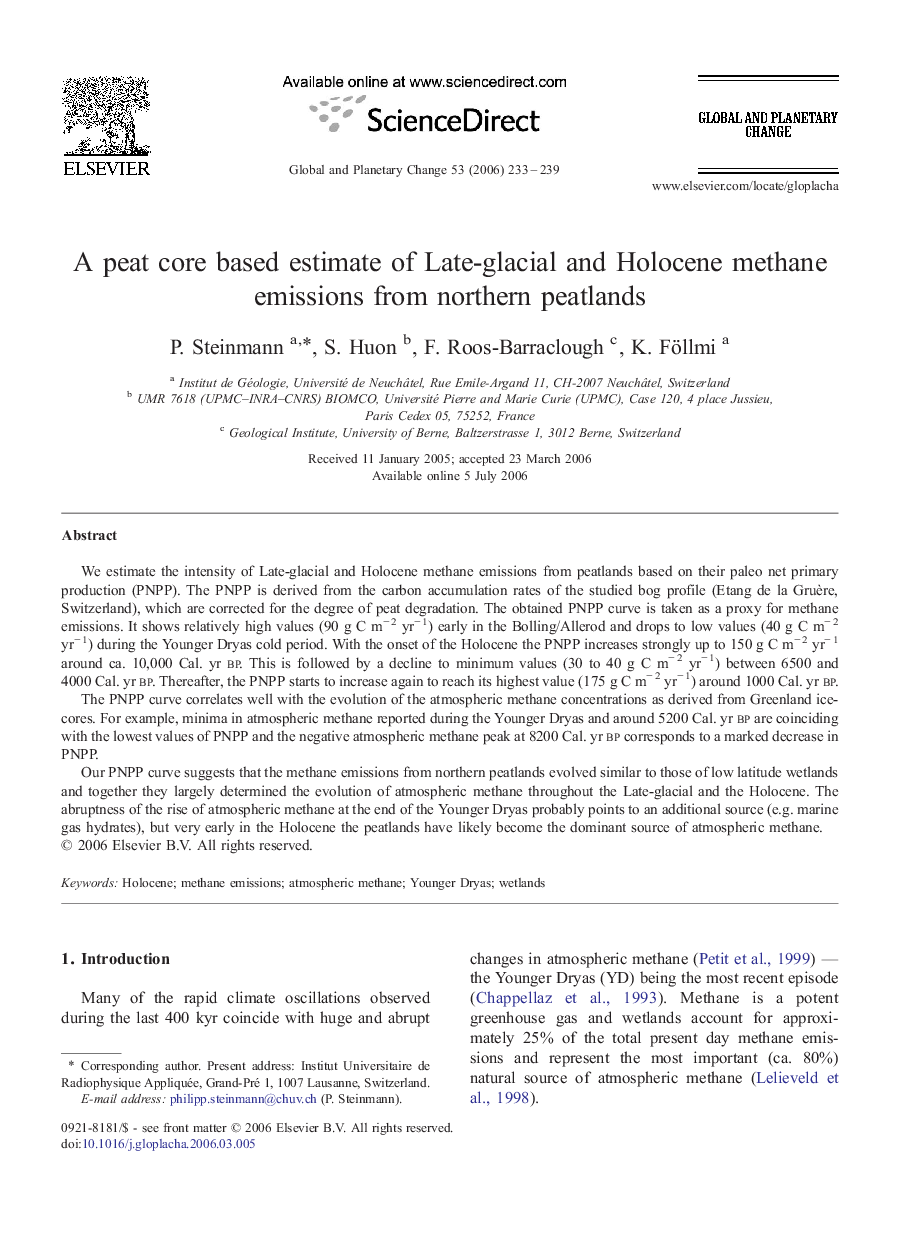| کد مقاله | کد نشریه | سال انتشار | مقاله انگلیسی | نسخه تمام متن |
|---|---|---|---|---|
| 4464521 | 1313734 | 2006 | 7 صفحه PDF | دانلود رایگان |

We estimate the intensity of Late-glacial and Holocene methane emissions from peatlands based on their paleo net primary production (PNPP). The PNPP is derived from the carbon accumulation rates of the studied bog profile (Etang de la Gruère, Switzerland), which are corrected for the degree of peat degradation. The obtained PNPP curve is taken as a proxy for methane emissions. It shows relatively high values (90 g C m− 2 yr− 1) early in the Bolling/Allerod and drops to low values (40 g C m− 2 yr− 1) during the Younger Dryas cold period. With the onset of the Holocene the PNPP increases strongly up to 150 g C m− 2 yr− 1 around ca. 10,000 Cal. yr bp. This is followed by a decline to minimum values (30 to 40 g C m− 2 yr− 1) between 6500 and 4000 Cal. yr bp. Thereafter, the PNPP starts to increase again to reach its highest value (175 g C m− 2 yr− 1) around 1000 Cal. yr bp.The PNPP curve correlates well with the evolution of the atmospheric methane concentrations as derived from Greenland ice-cores. For example, minima in atmospheric methane reported during the Younger Dryas and around 5200 Cal. yr bp are coinciding with the lowest values of PNPP and the negative atmospheric methane peak at 8200 Cal. yr bp corresponds to a marked decrease in PNPP.Our PNPP curve suggests that the methane emissions from northern peatlands evolved similar to those of low latitude wetlands and together they largely determined the evolution of atmospheric methane throughout the Late-glacial and the Holocene. The abruptness of the rise of atmospheric methane at the end of the Younger Dryas probably points to an additional source (e.g. marine gas hydrates), but very early in the Holocene the peatlands have likely become the dominant source of atmospheric methane.
Journal: Global and Planetary Change - Volume 53, Issue 4, October 2006, Pages 233–239